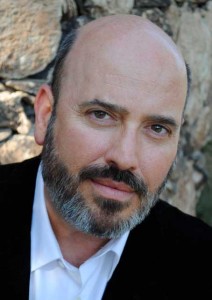
It has been another exciting and accomplished year for costume designer Mark Bridges, who received an Academy Award last year for his work in The Artist. Not resting on former laurels, he threw himself into not one, but two notable films – David O. Russell’s Silver Linings Playbook and Paul Thomas Anderson’s The Master.
Bridges has been designing for Russell for the last eight years, with I Heart Huckabees (2004) and The Fighter (2010), so he was the natural choice for the director’s adaptation of the novel “The Silver Linings Playbook.” The story of Pat (Bradley Cooper), a former school teacher, freshly out of a mental institution meeting Tiffany (Jennifer Lawrence), a young widow with fresh wounds of her own is set in Philadelphia and Bridges drew his inspiration once he arrived in the city. He immersed himself in the new environment soaking up the city, the people, the malls, the downtown stores and dived into the task of dressing Cooper, Lawrence and Robert De Niro as the characters from the working class neighborhood.
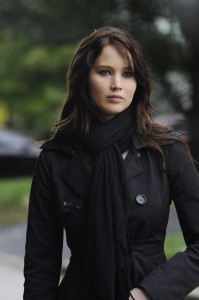
Dressing complex characters involved more than just the setting. It also involved weaving a representation of who the individual characters are with where they are from. For Tiffany, the intricacies that made up her character were already hinted at in the book and Bridges worked on expressing where the character fit into the story by draping her in black hues that come off as both edgy and pretty. “Little droplets of inspiration sprang from the original material, the book by Matthew Quick,” said Bridges. “Tiffany’s wearing black in the book. I liked that a lot. I thought it was really good because it works on a few levels. She’s in mourning. It’s edgy but kind of artistic, and it also makes her a fish out of water at a working class Philly neighborhood.”
Bridges relays another endeavor that’s also amusing – the challenge of creating the character of Pat without the potential distraction of actor Cooper’s glamor. “He’s a very good looking guy,” Bridges explained. “He’s in great shape but we didn’t want it to be all about that. I gave him larger clothes so it wasn’t so body conscious – more working class shapeless things, like hooded sweatshirts. You’re looking at his acting and not his biceps. I think it was successful. He comes off as appealing and pleasant to look at, but it’s really down the list as to who that character is.”
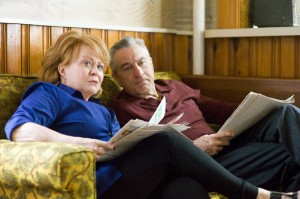
Developing fully faceted characters that are expressed through external appearances involved recreating a past that peeks through in the present. Bridges approached this with an almost method actor fervor. He went to the King of Prussia mall where all the locals go for their clothes and shopped imagining himself as the character. “I try to recreate what people would have access to and what they would be drawn to,” Bridges said. For Pat’s father (De Niro), Bridges went to Joseph Banks, Khol’s and some really off-the-beaten-path places to shop. “Everybody’s got their own thing about where they want to spend money and whether they care about their clothing. A lot of the stuff for De Niro, I was trying to recreate a history for him of being an Eagles fan, so I used things like cardigans that would’ve been popular in the ’60s and then put an Eagle emblem on them. It’s always just collaging things to create a cool, interesting character to look at. I tried to be everybody and tried to think how they would express themselves in their world within the confines of what they’re able to access.“
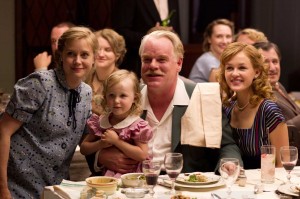
Bridges’ collaboration with Anderson on The Master, a film about a World War II naval officer returning from the war who gets deeply entrenched in a cult is a far departure from the world of Silver Linings, but Bridges committed to the film with just as much devotion.
Bridges has worked with Anderson since his first film Hard Eight (1996) to the most recent There Will Be Blood (2007). The director has been writing and planning the film for several years and Bridges was on hand to research scenes as they developed over a long stretch of time. Bridges explained his fascination with the film. “The fact that the story takes place in 1950 was really interesting to me because the look of that period has elements of the ’40s and elements of the ’50s so I was real curious in trying to crack that.” Period designs can be tricky because they should mark the time without alienating the audience. To this pursuit, Bridges found research wherever he could. He approached his work like an old-school librarian. He looked at books and worked off of images that he copied. “I’m a big believer in still using books to look up photographs. There are a lot of books and photo essays and research that are not online. Or you don’t know what to look up until you come across it in a book. Some of the strongest images in the film are found in a book, including the sand-woman and sculpture in the sand.” John Houston’s documentary Let There Be Light also served as a beacon for a sequence set in an army hospital.
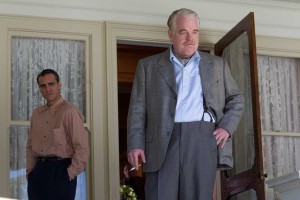
“There’s so many things in the film. Of course there’s the whole navy and army hospital and guys on leave and a battleship, but then there’s also people [everywhere else] – followers in Phoenix, followers in Philadelphia, a Fifth Avenue apartment, a farm in Northern California, a department store in San Francisco, an English pub, an English school. We had so many clothes because each of those scenes had its own color palette and character.” Bridges focused on creating lines of demarcation to differentiate the sequences. He was extremely attentive to what he used for each setting. “I wouldn’t use tweeds in anywhere else except England. I wouldn’t use cactus green and rust and golds and yellows anywhere except the scenes in Phoenix. There’s just a lot of specifics that are really subtle that give you a sense of place and you don’t even know it.“
For Bridges storytelling through clothes is a process that is collaborative. “It’s always a combination of things – meeting the director who was in the process of rewriting the script, the feeling of the actors and whatever meetings they’ve had with the director. I do my work with everybody and present what we’ve come up with. It’s always a process and it’s not just from one person or one person’s voice. It’s the director’s voice, the actor’s voice, it’s a little bit of the original story, a little bit of practical aspects of what we can get, when and what’s available.” Bridges’ dedication to developing a character through the way they’re dressed is an achievement that plays out in two very different but arresting films this season.





